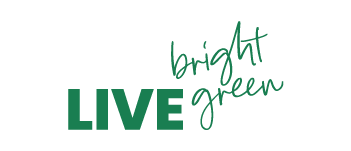Green or green-washing?
Let's talk about authenticity in the world of sustainability.
Whilst it's amazing to see that more and more brands are taking action towards caring for the environment, there is still a lot of hot air: words such "green", "sustainable", "natural", etc as a mere marketing strategy, to boost their sales prioritising profit over purpose 🙅♀️
How do we know who's the real deal and who isn't? Let’s break it down.
What is Greenwashing?
“Greenwash”:
noun
/ˈɡriːnwɒʃ/
behaviour or activities that make people believe that a company is doing more to protect the environment than it really is.
(Source: Cambridge Dictionary)
We all recall Greta Thunberg’s 2019 speech calling out world leaders for their lack of urgency on climate related issues, and since then the climate crisis has been a firm fixture in the media spotlight. The corporate world has definitely caught on and now almost everywhere we look, products bear labels of eco-friendly, sustainable, green, natural or any number of similar buzzwords peppered into all marketing collateral. So how do we navigate through this endless bombardment of advertisements and statements from companies to tell what is the real deal? How do we differentiate green from greenwashing?
How to spot greenwashing when looking for a job
Tip 1: Check the lists!
A good place to start is the Science Based Target initiative’s list of companies. This list can be considered a gold standard and is mostly focuses on larger corporations. There are also local standards to look out for, such as the Singapore Green Labelling scheme or Zero Waste Malaysia’s Pledge.
Pro tip: Check the criteria for passing the standard! Some standards are much more comprehensive than others. A comprehensive list should include emissions from source materials, manufacturing, sales, and those of end-users (in other words, Scope 1, 2 and 3 emissions).
Tip 2: Start at the source
What if you can’t see the company listed on any net-zero standard? Does this mean they are greenwashing? Not necessarily…
Check their pledges. Most multi-national companies have released their pledges to cut their emissions down to a certain extent. (If they haven’t yet made any commitments, that itself could be a red flag, but it’s worth digging deeper.) Companies like to share their ambitious plans to be “greener”, but keep in mind, the devil is in the detail. We need action, not promises. Look at their goals: What have they achieved so far? How are they planning to attain their goals? When are most of the decarbonisation going to happen? Who is in leading the charge? Are they putting their money where their mouths are?
Alternatively, there’s also the quick and dirty way of checking the greenwashing scale. A quick web search using the company name and keywords such as “environmental scandal” or “greenwashing” can quickly identify something that might be worth covering up.
How to spot greenwashing when buying a product
What happens if you want to check if a product in a grocery store is actually environmentally friendly?
First, let’s look at how companies greenwashing to help spot the perpetrators:
The packaging and/or advertising of the product are green and use imagery of nature.
Words like ‘green’, ‘sustainable’, ‘eco-friendly’, ‘biodegradable’ and ‘natural’ are used frequently often without any proof or back-up.
Tip 1: Green is the new red
Have you noticed that many brands have redesigned their packaging to appear more sustainable? Gone are the pop art style of bright manufactured colours and in are the simple, clean and natural looks. This is especially true with products that are single-use (think of bottled water for example). The existence of these products directly affect the environment, so for companies to claim that they might somehow be environmentally friendly is a huge contradiction. Green leafy designs on packaging makes it appear that this product is better for the environment compared with others.
As we always recommend, shop secondhand, or rent or borrow it from someone you know! However, for consumables, look for products that directly state how they are reducing their impact. For example, “12% less paper was used in manufacturing tissue boxes by making the length of the box 1cm smaller”, or “This bottle is made from 80% recycled plastic.”
Careful: watch out for the pesky *asterisk* that might just provide more information as this is where the devil is in the detail. The words “up to” will often appear.
Tip 2: Talk is cheap
Slapping buzz words like ‘sustainable’ and ‘natural’ on products are another form of virtue signalling with no real back-up. As there is no industry standard as to what a ‘clean’ or ‘natural’ product can be, the company can define it however they wish. An American retailer was recently called to action and fined USD $1 million for claiming their plastic bags were biodegradable, when they were not. Environmental officials determined that the claims were misleading as there were no disclaimers about how quickly the product will biodegrade in a landfill or in other environments how it may be disposed.
To accurately spot greenwashing, you can go through their ingredients list. Being familiar with ingredients used to make your favourite products actually helps you become a smarter consumer too! Not only are you able to spot controversial ingredients, but you’ll also be able to make sure you’re getting what you expect! Encouragingly, many ingredients now have certifications that they are measured by, such as chocolate (UTZ certification), coffee (GRI or SASB) and palm oil (RSPO) to keep manufacturers honest, and reduce the wiggle room for greenwashing.
Conclusion
Stay vigilant while shopping for your goods and only buy new when necessary. By taking small steps to become more informed, you will become a smarter consumer. Together we can demand better practices from our favourite brands, and protect our planet and its inhabitants.
Every conscious purchase makes a difference.
Sources & further reading
https://www.environmentalleader.com/2017/02/greenwashing-costing-walmart-1-million/
https://sciencebasedtargets.org/net-zero
https://zerowastemalaysia.org/pledge-about/
Written by: Lau Hiu Naam

